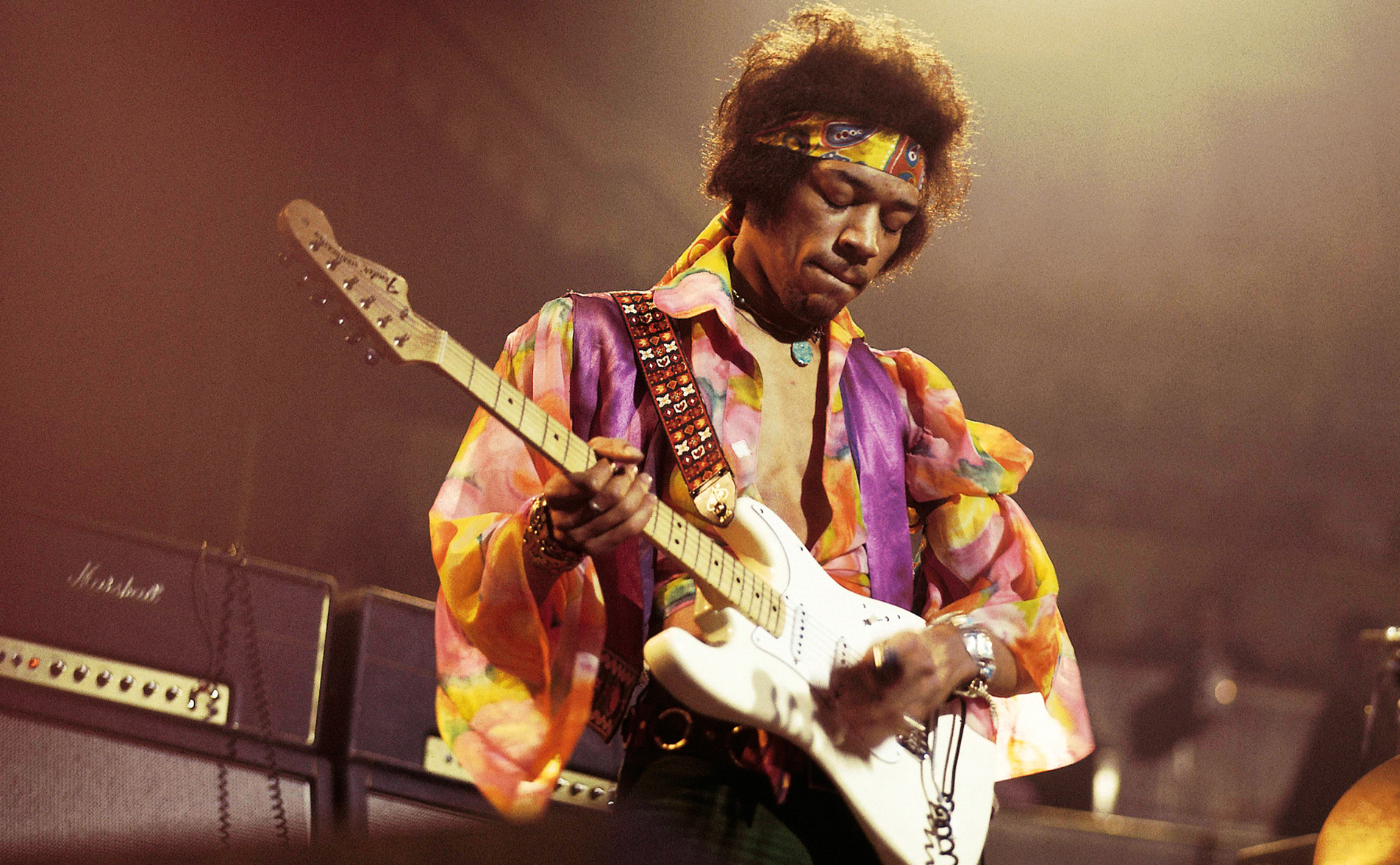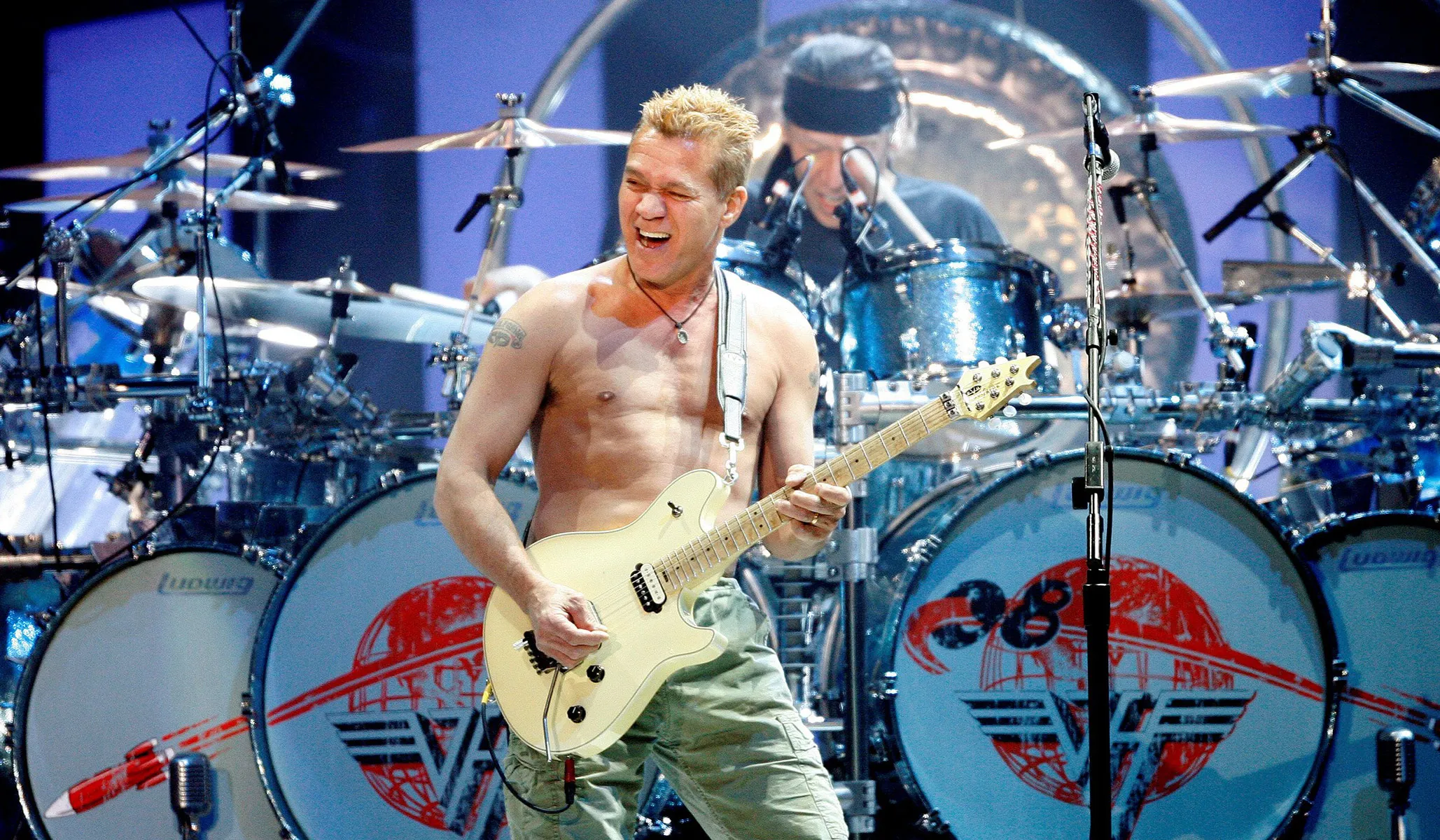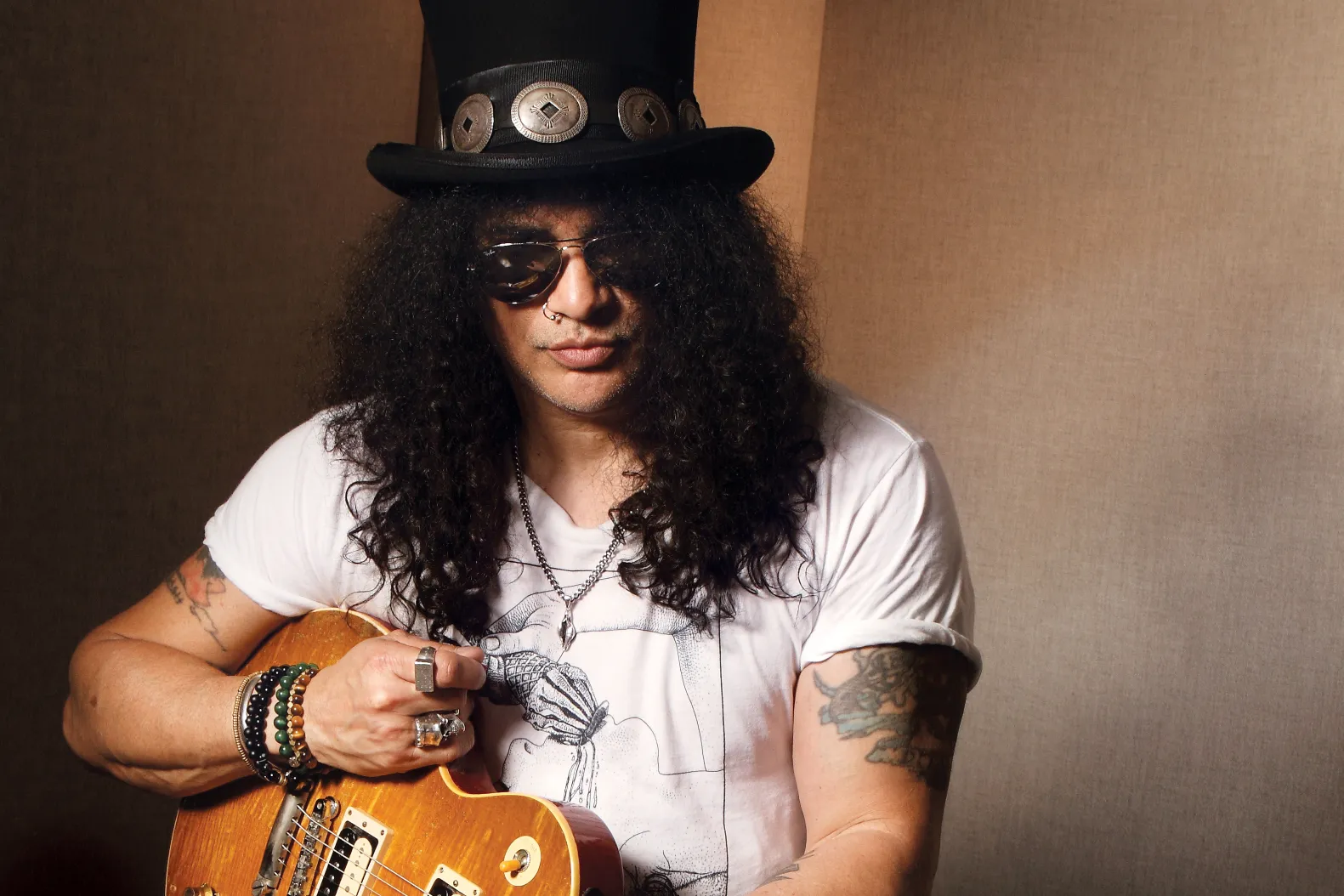The guitar isn’t just wood and strings—it’s a symbol of rebellion, creativity, and pure, unfiltered confidence. Since the mid-20th century, a roster of larger-than-life players has turned it into a cultural force, inspiring countless guys to pick it up and find their own groove. Let’s take a longer trip through history and meet the legends who made the guitar a badge of honor.

Start with Jimi Hendrix, the man who rewrote the rulebook. Born in 1942 in Seattle, Hendrix burst onto the scene in the late ‘60s with a sound that was equal parts chaos and genius. His 1969 Woodstock performance—where he turned “The Star-Spangled Banner” into a wailing, feedback-drenched masterpiece—still gives chills. Hendrix wasn’t just a technical wizard; he had a presence that owned every room. He’d play behind his head, with his teeth, or while his guitar went up in flames, all with a cool, effortless grin. For guys watching in their teens or 20s, he was the ultimate role model: a dude who didn’t care about norms and came out on top every time. His confidence wasn’t loud—it was electric.
Next, there’s Jimmy Page, the architect of Led Zeppelin’s sonic empire. Born in 1944 in England, Page blended blues, folk, and hard rock into a sound that’s still untouchable. Tracks like “Whole Lotta Love” and “Stairway to Heaven” are monuments to his skill, but it was his live performances that sealed the deal. Dressed in dragon-stitched jackets, wielding a double-neck guitar, Page looked like a rock ‘n’ roll sorcerer. He didn’t need to scream or posture—his riffs did the talking. That quiet, commanding vibe is something any guy can tap into: confidence doesn’t always roar; sometimes it simmers.

Jump to the ‘80s, and you’ve got Eddie Van Halen, the shred king who made jaws drop. Born in 1955 in the Netherlands, Eddie moved to California and turned the guitar world upside down with his band Van Halen. His two-handed tapping technique—heard in the explosive “Eruption”—wasn’t just fast; it was revolutionary. On stage, he’d rip through solos with a grin that said he was loving every second. Off stage, he was a gearhead tinkering in his garage, proving you don’t need to be a showboat to shine—just master your craft. For guys today, Eddie’s a reminder that confidence comes from knowing your stuff inside out.
Don’t sleep on Eric Clapton, either—the bluesman who turned pain into poetry. Born in 1945 in England, Clapton earned the nickname “Slowhand” for his soulful, deliberate style. Songs like “Layla” and “Tears in Heaven” hit hard because they came from a real place, and his live shows were all about feel over flash. Clapton didn’t need pyrotechnics—he’d stand there, head down, letting his Les Paul sing. That understated cool is a lesson in itself: you don’t have to be the loudest guy in the room to own it.
Add Duane Allman to the mix, the Southern rock pioneer who made slide guitar a thing of beauty. Born in 1946, Allman co-founded The Allman Brothers Band and gave us classics like “Statesboro Blues.” His playing was raw and emotional, sliding a glass bottle over the strings to create sounds that cut deep. Tragically, he died in a motorcycle accident at 24, but his legacy lives on. Duane’s confidence was in his authenticity—he played what he felt, no apologies.

Finally, there’s Slash, the top-hatted hero of Guns N’ Roses. Born Saul Hudson in 1965, Slash brought a gritty edge to the late ‘80s with riffs like the opening of “Sweet Child O’ Mine.” His look—curly hair spilling out from under that hat, cigarette dangling—was pure rock swagger. Slash didn’t just play guitar; he lived it, and that unshakeable vibe made him a hero for guys coming of age in the ‘90s and beyond.
These legends started somewhere—usually with a beat-up guitar and a dream. They sucked at first, fumbled chords, and kept going. That’s the thread that ties them together: the guitar gave them a way to build something epic, step by step. It can do the same for you.
The Science: How Playing Guitar Boosts Your Confidence
So what’s the deal? Why does plucking strings make you feel like you can take on anything? It’s not just the rock-star fantasy—there’s real science showing how playing an instrument like the guitar transforms your brain, body, and attitude. Here’s the full breakdown.
Rewiring Your Brain for the Win
Playing guitar is like CrossFit for your mind. Research from the University of Zurich shows that learning an instrument boosts neuroplasticity—your brain’s ability to rewire itself. Every time you wrestle with a chord or nail a riff, you’re forging new neural connections. That doesn’t just make you a better player; it sharpens your memory, focus, and problem-solving skills. A 2014 study in The Journal of Neuroscience found that musicians have thicker grey matter in areas tied to coordination and planning. For a guy that is juggling work, mates, and maybe a dodgy flatmate—that mental edge is gold. You’re not just learning guitar; you’re leveling up your brain.

The Dopamine Rush
Here’s the fun part: music feels good because it messes with your chemistry—in a good way. A 2011 McGill University study showed that playing an instrument releases dopamine, the brain’s reward chemical. Hit a clean G chord or jam along to “Wonderwall,” and you get a little high, like finishing a killer workout or sinking a perfect putt. Over time, that buzz builds. You start associating the guitar with feeling awesome, and that sticks. It’s not about ego—it’s about knowing you’ve got something that lights you up.
Conquering the Grind
Let’s not sugarcoat it: guitar’s tough at first. Your fingers cramp, the strings buzz, and your mates might laugh when you butcher “Smoke on the Water.” But that struggle is where the magic happens. Psychologists call it “self-efficacy”—the belief you can handle hard things. A 2016 Frontiers in Psychology study found that mastering an instrument boosts self-esteem, especially for young adults. Every time you push past a sore fingertip or nail a tricky transition, you’re proving you’ve got grit. That carries over—whether it’s asking for a raise or chatting up someone at the pub, you’ve got evidence you can figure shit out.
The Social Edge
Ever seen a guy with a guitar at a party? Instant cred. There’s science behind that. A University of Sussex study found that musicians are rated as more attractive and competent by others. It’s not about showing off (though it can’t hurt); it’s about having something real to bring to the table. Jam with your mates, post a clip online, or just noodle in your room—either way, the guitar gives you a way to connect. For young guys, when life’s about finding your tribe, that’s a confidence booster you can’t buy.

Stress? What Stress?
Life’s a pressure cooker—deadlines, bills, that mate who won’t shut up about crypto. Guitar’s your release valve. A 2015 British Journal of Psychiatry study showed that making music slashes cortisol, the stress hormone. Strum a few chords after a rough day, and you’ll feel the tension melt. It’s not about becoming a monk; it’s about having a tool to reset. Less stress means you walk taller, talk smoother, and handle whatever comes next.
Real-Life Proof
Take Dave, a 28-year-old accountant I heard about from a mate. He picked up guitar during lockdown, fumbling through chords on a cheap acoustic. Six months later, he’s playing “Black Dog” and says he feels more sure of himself at work—less rattled by big meetings. Or Mike, 35, a mechanic who started jamming with his mates. He’s no pro, but he’s got a new strut, like he’s carrying a secret weapon. The science checks out: guitar doesn’t just change how you play—it changes how you live.
Get Started: A Beginner’s Guide to Playing Guitar
Sold yet? Good. You don’t need to be a prodigy or have a fat wallet—just a guitar, some guts, and 15 minutes a day. Here’s a beefed-up guide to get you strumming, plus some killer YouTube links to back you up.
Step 1: Gear Up
- Guitar: Grab an acoustic (easier to start) or electric (more rock vibes). Second-hand works fine—check local shops or online.
- Tuner: Strings are E, B, G, D, A, E (bottom to top). Download GuitarTuna or use a clip-on tuner.
- Pick: Optional—your thumb works too.
Step 2: Three Chords to Rule Them All
Start with these. Left hand presses strings (fingers 1-4: index to pinky), right hand strums.
- G Major: 2nd finger on 5th string, 3rd fret; 3rd finger on 6th string, 3rd fret; 1st finger on 2nd string, 2nd fret. Strum all six strings.
- C Major: 1st finger on 2nd string, 1st fret; 2nd finger on 4th string, 2nd fret; 3rd finger on 5th string, 3rd fret. Strum from 5th string down.
- D Major: 1st finger on 3rd string, 2nd fret; 2nd finger on 1st string, 2nd fret; 3rd finger on 2nd string, 3rd fret. Strum from 4th string down.
Fingers hurt? Normal. Keep going—calluses form in a week or two.
Step 3: Strum Like a Boss
Hold a pick or use your thumb. Try a down-up-down-up rhythm, slow and steady. Pair it with G, C, D—boom, you’re playing “Good Lovin’” by The Rascals. Mess up? Laugh it off and try again.
Step 4: Nail a Riff
Riffs are your fast track to cool. Here’s “Sweet Home Alabama”:
- 2nd string, 3rd fret (twice), open 2nd string, 1st string, 3rd fret. Repeat. Hit each note clean.
Step 5: Build Momentum
Switch between G, C, and D while strumming. Start sloppy—aim for smooth. Add a metronome app at 60 beats per minute to lock in timing. Practice 15-30 minutes daily; consistency trumps talent early on.
Step 6: Troubleshoot
- Buzzing strings? Press harder, closer to the fret.
- Can’t switch chords? Slow down, move one finger at a time.
- Bored? Learn “House of the Rising Sun” next—it’s just four chords.
Video Lifelines
To help you on your way to guitar player stardom we have found you some visual guidance.
Learn Guitar in 10 Days
Your First Guitar Lesson
How to successfully teach yourself guitar
Learn to play Perfect by Ed Sheeran
Keep the Faith
You’ll suck at first—everyone does. Hendrix did. Page did. You’re not aiming for perfection; you’re aiming for progress. One chord becomes three, three become a song, and soon you’re the guy who can play “Wonderwall” without blinking.
The Final Riff
From Hendrix’s fire to Slash’s snarl, guitar gods didn’t just make music—they built confidence that echoed through generations. Science proves it’s no fluke: playing guitar sharpens your mind, lifts your mood, and gives you a swagger that’s all your own. Whether you’re 20 and finding your feet or 40 and craving a spark, this is your shot. Start with three chords, a cheap axe, and a bit of grit. You won’t be headlining gigs tomorrow, but you’ll feel like a legend in your own skin. Grab that guitar, mate—the stage is yours.




